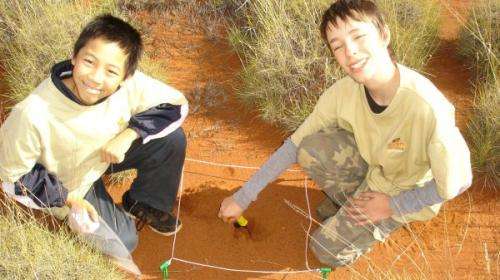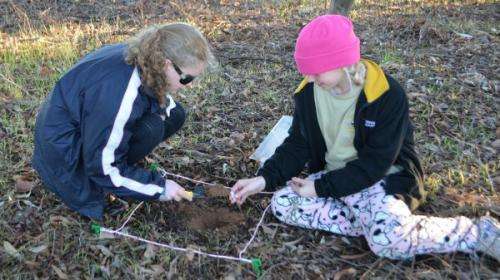Around 625 MicroBlitzers have so far contributed approximately 1750 soil samples, all of which have had their DNA extracted in preparation for sequencing.
Soil microbiology will be better documented thanks to a new high-throughput DNA sequencing facility, launched last month at the University of Western Australia.
The new technique gives greater coverage of the genetic code more quickly, and will allow researchers to classify soil microbes to family level, inferring their functional roles and contributing to a state-wide citizen science project aiming to map the microbial diversity of WA soils.
Named MicroBlitz, the project is led by Winthrop Professor Andrew Whiteley and is creating "a baseline map of the microbial diversity of Western Australia, to contribute to the growing global knowledge of the diversity, functions and distribution of microbial activity."
Approximately 30 UWA students from across the Faculty of Science have signed on as volunteer MicroBlitz laboratory interns, taking the opportunity to gain valuable experience in soil analysis processes including DNA extraction, sequencing and bioinformatics.
MicroBlitz project manager Ms Deborah Bowie says microbial life is required to sustain planet Earth, yet we know very little about it.
"We know more about our universe than the soil we stand on," she says.
Microblitz is a true partnership between scientists and the public.
"West Australian soils are microbiologically very different to those sequenced before around the world."
To learn more about WA's soil microbes, community volunteers—known as MicroBlitzers—are undertaking fieldwork across WA.
Ms Bowie says WA soils have a low abundance of microbes known to be good at nutrient cycling, which can negatively affect productivity.
"The bigger picture is eventually to be able to manipulate our soil microbial diversity for positive outcomes, whether that be in enhanced production for agriculturalists, ecological restoration and rehabilitation for industry or biodiversity conservation."
Citizen Science soil samplers required
Around 625 MicroBlitzers have so far contributed approximately 1750 soil samples, all of which have had their DNA extracted in preparation for sequencing.
Ms Bowie says MicroBlitz is a true partnership between scientists and the public.
"It simply isn't about us asking the public to take samples; we evolved the project together and continue to evolve it as we receive feedback from our citizen scientists."
To complete the microbial map, soil samples are required from all over the state.
"There are some large gaps we need to fill, particularly in the north and eastern regions of WA, and during the next year we will be focusing on getting these areas sampled," says W/Prof Whiteley.
The first-phase microbial map is planned for release by March 2015.
More information: For information on how to get involved, go to www.microblitz.com.au
Provided by Science Network WA






















